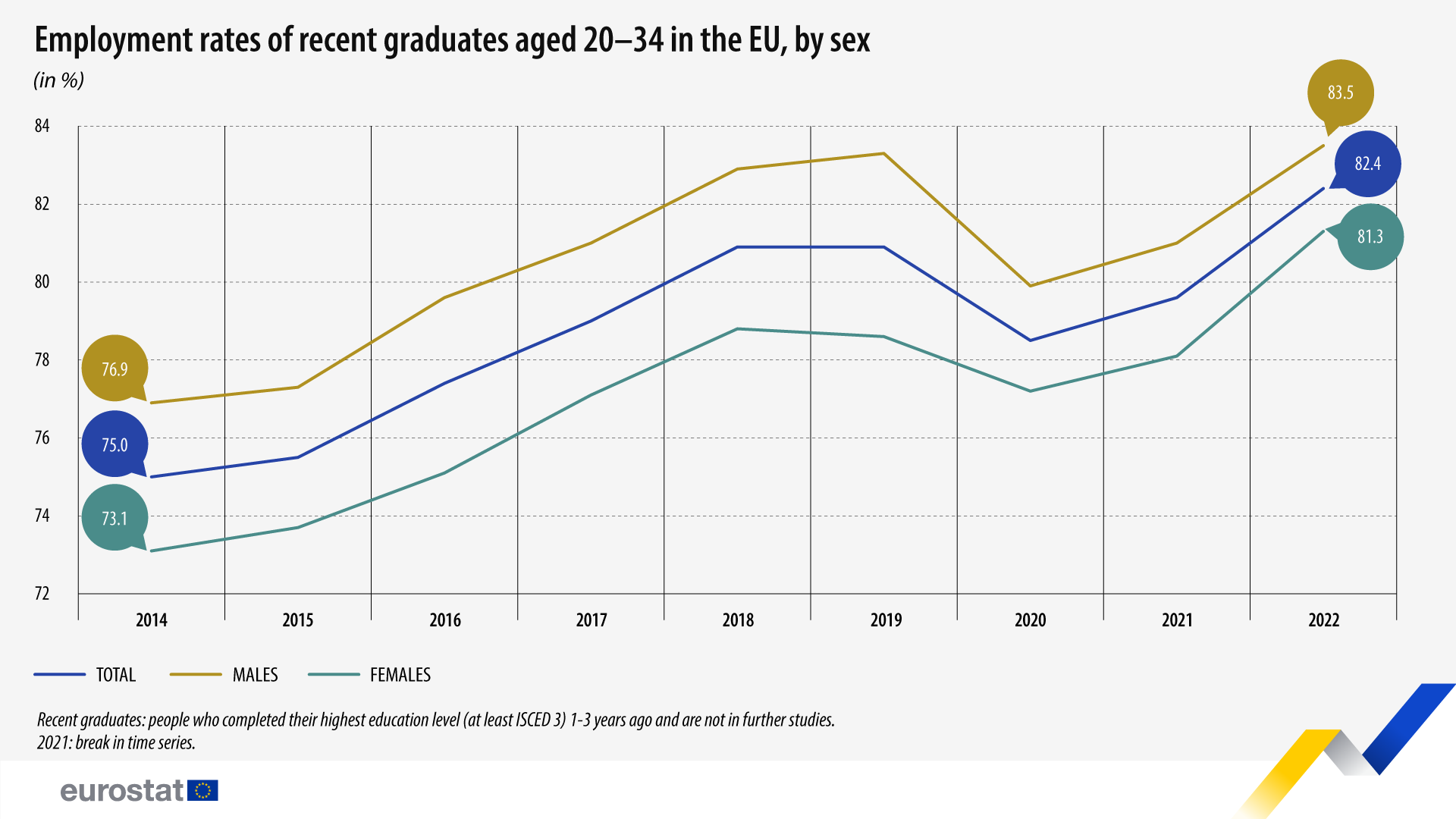Recent graduates: new high in employment in 2022

In 2022, 82% of recent graduates (ISCED 2011 levels 3-8) aged 20-34 in the EU were employed. From 2014 to 2022, the employment rate for this group rose by 7 percentage points (pp), showing a consistent rising trend interrupted only by the COVID-19 pandemic.
The employment rate in 2022 marked a new peak, surpassing the previous high of 81% achieved in 2018, a rate that had remained unchanged in 2019.
Source dataset: edat_lfse_24
The employment rate for recent male graduates has consistently been higher than that for recent female graduates. However, in 2022, the gap was narrowed down to 2 pp, marking the smallest disparity recorded in the eight-year span from 2014 to 2022. Meanwhile, the largest disparity between 2014 and 2022 was recorded in 2019 (4 pp).
The disparities in employment rates may be explained by the nature of the fields studied, as there are differences in labour market demand. Women and men tend to study different fields - for example, a higher proportion of science and technology students tend to be male.
Highest employment rates of recent graduates in Luxembourg and the Netherlands
In 2022, at national level, employment rates of recent graduates were highest in Luxembourg and the Netherlands (both 93%), Germany (92%) and Malta (91%).
Source dataset: edat_lfse_24
Meanwhile, the lowest rates were reported in Italy (65%), Greece (66%) and Romania (70%).
This news article marks International Youth Day on August 12, recognising the strides made in employment rates among young recent graduates in the EU.
For more information
- Statistics Explained article on employment rates of recent graduates
- Thematic section on the labour market
- Database on the labour market
- Statistics 4 beginners on the labour market
Methodological notes
- Recent graduates: people who completed their highest education level (at least ISCED 3) 1-3 years ago and are not in further studies.
- Data in this article come from EU Labour Force Survey (EU-LFS). There is a new legal basis for EU-LFS from 2021 onwards: Regulation (EU) 2019/1700. This new legal basis implies a break in series between 2020 and 2021; results obtained before and after 1 January 2021 are consequently not fully comparable.
- Czechia: break in time series in 2022.
- France and Spain: definition differs (see metadata).
If you have any queries, please visit our contact us page.

